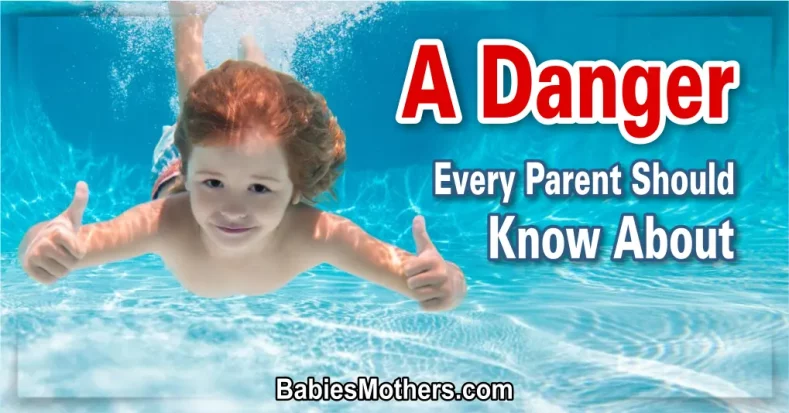Secondary Drowning
Have you ever heard of a phenomenon called secondary drowning? It’s a little-known yet highly dangerous occurrence that parents are increasingly becoming aware of. This perilous situation can unfold after an individual inhales water into their lungs.
Although incidents of secondary drowning are rare, it’s crucial to understand that they can occur even hours after a near-drowning episode or any event where water suddenly enters the lungs (like when children jump into a pool or play on a water slide).
Secondary drowning is rare but possible, so parents need to be careful. Additionally, secondary drowning is not just a situation that occurs after water fills the lungs. Other liquids may have the same effect. For example, let’s take a child who tries to stop vomiting so as not to dirty the carpet at home. When the vomit goes into the lungs, there is a danger of secondary asphyxiation even hours after evacuation.
What is Secondary Drowning?
Secondary drowning can happen when water swiftly enters the lungs during a near-drowning event or water-based play, like on a water slide. The rapid intake of water can occur before the person has a chance to react.
The alarming aspect of secondary drowning is that the affected individual, whether a child or an adult, might appear fine immediately after the incident and may go hours without showing symptoms. However, the water in the lungs can gradually lead to swelling (edema), resulting in breathing difficulties. If left untreated, this could cause brain injury or even death.
Children face a higher risk due to their limited experience in water activities and their tendency to focus more on play than safety. Additionally, younger children might struggle to communicate if something feels wrong.
What are the Symptoms of Secondary Drowning?
Recognizing symptoms after a water inhalation incident is crucial. Seek emergency medical help if you notice these signs:
- Respiratory difficulty, such as rapid breathing or using stomach muscles to breathe.
- Lethargy, decreased energy, or fatigue.
- Paleness.
- Audible crackling sounds while breathing.
- A wet-sounding cough.
Keep a close watch on your child because symptoms might surface hours after the incident, even if they seem okay initially. Symptoms could manifest up to 24 hours later. If your child goes under the water, even for a brief period during a swimming lesson, keep a close eye on her.
How to Prevent Secondary Drowning and Ensure Water Safety?
Taking measures to guarantee water safety is the most effective way to prevent secondary drowning and pool-related accidents. Here are some crucial pool safety tips for parents:
- Never leave a child unattended, even for a short duration. Keep everything within arm’s reach.
- Ensure that you and caregivers know CPR (cardiopulmonary resuscitation).
- Teach children, regardless of age, to always seek permission before entering the water.
- Always supervise children, including good swimmers. Avoid distractions like phone calls, socializing, or alcohol consumption. Keep young children within arm’s reach.
- Educate kids to avoid playing near drains, which pose entrapment risks.
- Discourage games where kids compete to hold their breath for extended periods.
- Instruct kids never to swim alone.
- Teach kids to dive only from designated areas, like diving boards.
- Store pool toys away when not in use.
- Never leave young children unsupervised near water, even in shallow pools.
- If you have a pool, ensure it’s completely fenced with self-closing, self-latching gates out of reach for small children.




